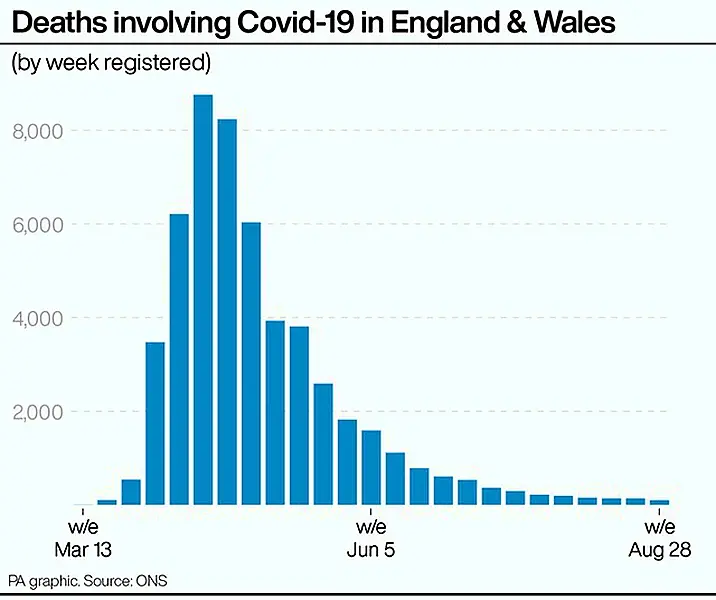They say the system outperforms existing scores and can be used to support treatment decisions.
The 4C (Coronavirus Clinical Characterisation Consortium) Mortality Score uses readily available data to accurately categorise patients as being at low, intermediate, high, or very high risk of death.
Researchers say it should be further tested to determine its applicability in other populations, say the researchers.
But they estimate that the accuracy is almost 100% in terms of predicting the expected versus the predicted mortality across all of the patient group.

To develop the model, they collected routine data from 35,463 adults – with a median age 74 years – with Covid-19 who were admitted to 260 hospitals across England, Scotland and Wales between February 6 and May 20.
Measures included age, sex, number of underlying conditions, respiratory rate, blood oxygen concentration, level of consciousness, urea, and C-reactive protein – a chemical linked to inflammation.
Scores for each of these measures are entered into the model to give a score ranging from 0-21 points.
Risk cut-off values were defined by the total point score for an individual which represented a low (less than 2% mortality rate), intermediate (2-14.9%) or high-risk (15% or more) groups.
According to the study published in the BMJ, patients with a score of 15 or more had a 62% mortality compared with 1% mortality for those with a score of three or less.
The study suggests that patients with a 4C Mortality Score falling within the low risk groups might be suitable for management in the community.
While those within the intermediate risk group might be suitable for ward level monitoring, the researchers say.
However, patients with a score of nine or higher were at high risk of death – around 40%, which could prompt aggressive treatment, including the initiation of steroids and early escalation to critical care if appropriate.
Ewen Harrison, professor of surgery and data Science, University of Edinburgh and honorary consultant surgeon, said: “We did think quite carefully about what would be most useful to clinicians at the starting point of making this score.
“And in many hospitals where doctors are having to wear full personal protective equipment in order to look after patients, it’s not necessarily straightforward to have a smartphone or to have constant access to a computer in front of you.
“So one of the things that we wanted to do here was have a simple enough score, which contained a sufficient amount of information that could be calculated on a bit of paper alone, rather than having to have some fancy app, which might limit its usability.”
The study which is part of the ISARIC 4C (Coronavirus Clinical Characterisation Consortium), compared the model with existing risk scores and found that it demonstrated high discrimination for mortality with excellent calibration.
According to the paper, it compared favourably to 15 pre-existing models, including best-in-class machine learning techniques and demonstrated consistency across all performance measures.
Because the study was observational, cause cannot be established.
The researchers point to some limitations that may have affected the performance and generalisability of the score, for example among younger patients and in settings outside the UK.
Calum Semple, professor in child health and outbreak medicine, University of Liverpool, and ISARIC 4C co-lead, said: “In a clinical use, it’s incredibly useful to be able to get a broad idea from a score like this, which gives you that that confidence and that check and sometimes makes you think twice.”







